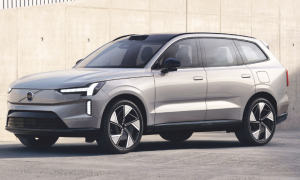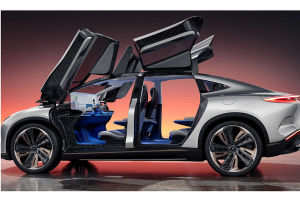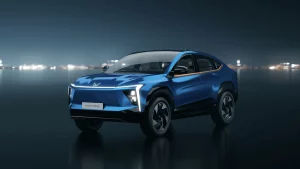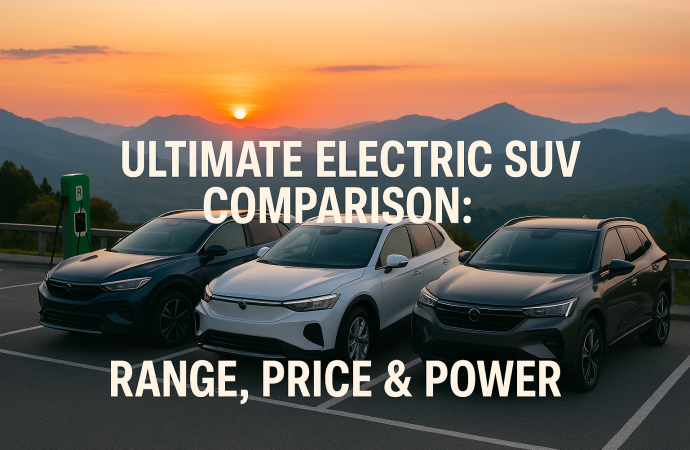Introduction Electric SUVs are reshaping how we think about family vehicles. In 2025, more models offer longer range, faster charging, and competitive prices than ever before. Gone are the days when EVs meant compromise. Today’s electric SUVs combine practicality, performance, and eco-friendly driving in one package. Whether you commute to work, take road trips, or
Introduction
Electric SUVs are reshaping how we think about family vehicles. In 2025, more models offer longer range, faster charging, and competitive prices than ever before. Gone are the days when EVs meant compromise. Today’s electric SUVs combine practicality, performance, and eco-friendly driving in one package. Whether you commute to work, take road trips, or run errands, an electric SUV can meet your needs while saving on fuel costs and reducing emissions. In this article, we compare the top electric SUVs on the market based on three key factors: driving range, purchase price, and power. You will learn how each model stacks up, what features matter most, and practical tips to choose the right EV SUV for your lifestyle. By the end, you’ll be ready to pick the perfect electric SUV that balances range, price, and punch.
What Is an Electric SUV?
Electric SUVs are sport utility vehicles powered solely by electricity. Instead of a gasoline engine, they use one or more electric motors and a rechargeable battery pack. When you press the accelerator, electric power flows instantly to the wheels, giving smooth, silent acceleration. Regenerative braking recovers energy when you slow down, extending driving range. Unlike hybrid SUVs, electric SUVs produce zero tailpipe emissions, which means cleaner air and quieter neighborhoods.
Electric SUVs come in various sizes, from compact crossovers to full-size three-row models. They often share design cues with gasoline SUVs—higher seating, cargo space, and available all-wheel drive. The main difference lies under the hood: no gasoline engine, no exhaust pipe, and no oil changes.
Why Choose an Electric SUV in 2025?

Image by: Yandex.com
By 2025, electric SUVs have matured in three critical areas: range, price, and power.
A. Range Improvements: Early EVs struggled with ranges under 200 miles. Today’s electric SUVs routinely offer 250 to 350 miles on a single charge. Charging networks have expanded too, with fast chargers along highways that add 100 miles in 15–20 minutes.
B. Competitive Pricing: As battery costs fell, manufacturers priced electric SUVs close to gasoline counterparts. Federal and state tax credits can lower upfront costs further. Many models start under $50,000, making EV SUVs accessible to more buyers.
C. Power and Performance: Electric motors deliver instant torque, resulting in brisk acceleration. Even mid-level trims can sprint from 0 to 60 mph in under 6 seconds. Adaptive suspension and low center of gravity provide sure-footed handling.
In addition, owning an EV SUV can reduce maintenance expenses. No oil changes, fewer moving parts, and reliable regenerative brakes translate to lower service bills. For families, the cargo space, safety features, and room for kids and pets remain strong selling points.
Top Electric SUVs of 2025: Range, Price & Power

Image by: Yandex.com
Let’s examine six standout models that balance range, price, and power. We focus on models widely available in North America and Europe.
Tesla Model Y
Range: 330 miles
Base Price: $52,000
Power: 384 hp
The Tesla Model Y remains a benchmark for range and charging network. Its dual-motor all-wheel drive delivers sharp handling and 0–60 in 4.8 seconds. Model Y’s minimalist interior centers on a large touchscreen with over-the-air updates. The Supercharger network and 330-mile EPA range make long-distance travel worry-free.
Ford Mustang Mach-E
Range: 314 miles
Base Price: $46,000
Power: 335 hp
Ford’s Mustang Mach-E blends iconic styling with modern EV tech. Its Standard Range RWD version starts near $46,000 and offers 260 miles, while the Extended Range AWD trim reaches 314 miles. The Mach-E accelerates from 0–60 in 5.1 seconds. Sync 4A infotainment and FordPass charging integration ease route planning.
Hyundai Ioniq 5
Range: 303 miles
Base Price: $43,000
Power: 320 hp
The Hyundai Ioniq 5 stands out with its retro-futuristic design and ultra-fast charging—up to 10–80% in 18 minutes on a 350 kW charger. Its 303-mile range and 320 hp dual-motor AWD trim cost around $50,000. The spacious cabin features sliding center console and flat floor. Vehicle-to-load (V2L) mode lets you power tools or camping gear.
Kia EV6
Range: 310 miles
Base Price: $45,000
Power: 319 hp
Built on the same platform as the Ioniq 5, the Kia EV6 focuses on sportier handling and sloping roofline. Its rear-wheel-drive Long Range trim reaches 310 miles. The GT-Line AWD model drops to 274 miles but boosts power to 576 hp for 0–60 in 3.5 seconds. The EV6’s cabin offers dual panoramic screens and high-speed 800V charging tech.
Volkswagen ID.4
Range: 275 miles
Base Price: $40,000
Power: 201 hp
The Volkswagen ID.4 brings a familiar VW feel to electric SUVs. The Pro S RWD trim starts near $40,000 and delivers 275 miles of range. Its 201 hp motor provides smooth daily driving and 0–60 in 7.8 seconds. ID.4’s interior is simple, with a small touchscreen and soft recycled materials. Volkswagen’s We Charge network simplifies public charging.
Chevy Blazer EV
Range: 320 miles
Base Price: $47,000
Power: 340 hp
Chevrolet’s new Blazer EV targets families wanting a familiar nameplate with EV perks. The RWD variant offers 320 miles at a starting price of $47,000. The RS AWD version ramps up to 557 hp and handles 0–60 in 4 seconds but reduces range to 260 miles. Blazer EV features Super Cruise hands-free highway driving and a 17.7-inch curved display.
Table: Electric SUV Comparison
| Model | Range (miles) | Base Price (USD) | Power (hp) | 0–60 mph (sec) | Fast-Charge Time (10–80%) |
|---|---|---|---|---|---|
| Tesla Model Y | 330 | $52,000 | 384 | 4.8 | 20 min (Supercharger) |
| Ford Mustang Mach-E | 314 | $46,000 | 335 | 5.1 | 45 min (DC Fast Charger) |
| Hyundai Ioniq 5 | 303 | $43,000 | 320 | 5.2 | 18 min (350 kW charger) |
| Kia EV6 | 310 | $45,000 | 319 | 5.1 | 18 min (350 kW charger) |
| VW ID.4 | 275 | $40,000 | 201 | 7.8 | 38 min (DC Fast Charger) |
| Chevy Blazer EV | 320 | $47,000 | 340 | 4.0 | 25 min (DC Fast Charger) |
Factors to Consider Beyond Range, Price, and Power

Image by: Yandex.com
While range, price, and power are key, other factors influence your decision.
Charging Infrastructure
A strong home and public charging plan is essential. Check if your city has reliable Level 2 and DC fast chargers. Tesla owners benefit from Tesla Superchargers; other models rely on networks like Electrify America and ChargePoint. For home charging, install a 240V Level 2 charger to add 25–30 miles per hour of charge.
Interior Space and Comfort
Passenger room and cargo capacity vary. The Ioniq 5’s sliding seats maximize legroom, while the Blazer EV offers a large rear cargo area. Test seating comfort and headroom, especially if you have tall family members or large car seats.
Technology and Features
Look for driver-assist systems like adaptive cruise control, lane-keep assist, and hands-free driving. Infotainment usability matters—check screen responsiveness, layout, and smartphone integration. Unique features like V2L and Super Cruise may sway your choice.
Warranty and Reliability
Electric SUVs usually come with battery warranties of eight years or 100,000 miles. Check manufacturer reliability ratings and customer reviews. A solid warranty and track record reduce future repair worries.
Environmental Impact
Consider each model’s carbon footprint from manufacturing and electricity source. Some automakers use more recycled materials and renewable energy in their factories. If sustainability is key, research each brand’s broader environmental efforts.
Tips for Buying and Owning an Electric SUV

Image by: Yandex.com
Follow these tips for a smooth transition to EV ownership.
- Test Drive Multiple Models: Feel the differences in acceleration, handling, and ride comfort.
- Calculate Total Cost of Ownership: Factor in electricity costs, tax incentives, maintenance savings, and resale value.
- Check Local Incentives: State rebates and utility credits can lower the net price by $2,000–$7,500.
- Plan Your Charging Setup: Get a home Level 2 charger installed and map public chargers along frequent routes.
- Maintain Battery Health: Avoid frequent deep discharges and extreme temperatures. Software updates may add new features and efficiency.
Conclusion
In 2025, electric SUVs offer an appealing mix of range, price, and power. The Tesla Model Y leads in range and charging network, while the Volkswagen ID.4 delivers a budget-friendly entry. Models like the Hyundai Ioniq 5 and Kia EV6 blend design, comfort, and fast charging. The Chevy Blazer EV brings performance to the lineup, and the Ford Mustang Mach-E adds iconic style. Beyond raw specs, consider charging access, interior space, tech features, warranties, and environmental impact. By test driving multiple models, calculating ownership costs, and planning your charging setup, you can find the perfect electric SUV for your needs.
Call-to-Action
Ready to make the switch? Schedule test drives for your top picks this week and explore local EV incentives—drive electric and enjoy the future today!
















